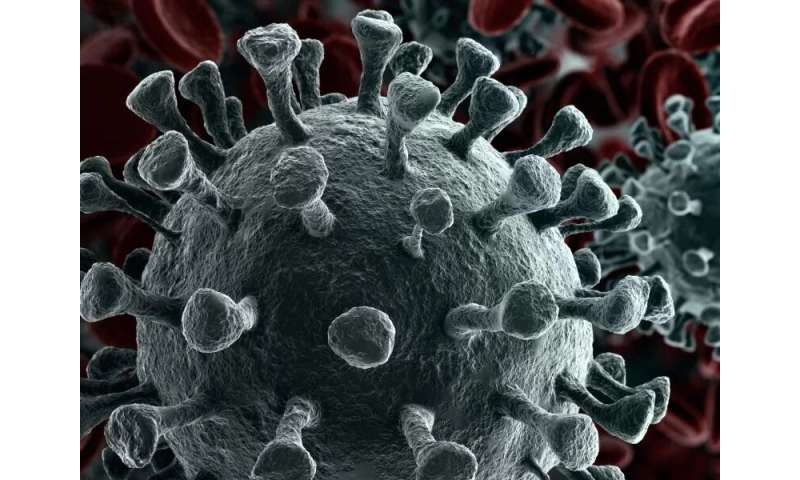Undetected cases may be driving coronavirus spread, study finds
You're a little feverish, but you feel good enough to get your shopping done and a quick workout at the gym.
If you do, you could become part of the exponential spread of the coronavirus, a new study concludes.
About 86% of COVID-19 cases in China were milder and went undetected during the two-week ramp-up of the epidemic in January, prior to the country imposing travel restrictions, researchers conclude in the March 16 issue of Science.
These undocumented cases of infection were "about half as infectious per person as a documented case who has more severe symptoms and may be shedding more," said senior researcher Jeffrey Shaman. He's a professor of environmental health sciences at Columbia University Mailman School of Public Health, in New York City.
However, "because there are many more of these undocumented cases, it's the undocumented infections that are driving the spread and growth of the outbreak," Shaman said.
The continued and widening lockdown of the United States is therefore the right move to limit the COVID-19 epidemic as much as possible, the researchers said.
On Monday, President Donald Trump announced during a media briefing that the U.S. Centers for Disease Control and Prevention now advises all Americans to avoid all gatherings of more than 10 people, avoid eating and drinking at restaurants, bars and food courts, and avoid discretionary travel for 15 days.
Coronavirus Task Force coordinator Dr. Deborah Birx said during the briefing that the latest step was taken because new modeling shows that a significant amount of the coronavirus' spread is fueled by "silent transmission."
Dr. Anthony Fauci, director of the U.S. National Institute of Allergy and Infectious Diseases, was blunt about the coming weeks. "The worst is yet ahead for us," he said during the briefing. "It's how we respond to that challenge that will determine what the ultimate endpoint is going to be."
Across the country, many shops, schools, restaurants, bars and gyms have already closed in an effort to promote social distancing and keep people from infecting each other with coronavirus.
Another much-touted policy aimed at limiting the spread of COVID-19—travel bans—is not nearly as effective, a second study published recently in Science found.
Travel bans implemented inside China only delayed the spread of the epidemic by three to five days, while international bans halted the spread of coronavirus by about a few weeks, said senior researcher Alessandro Vespignani, director of the Network Science Institute at Northeastern University, in Boston.
"Travel restrictions alone do not really do much but delay the spread of the disease," said study co-author Elizabeth Halloran, a professor of biostatistics at the University of Washington School of Public Health, in Seattle. "Delaying is good because it slows things down, but the idea is that transmissibility really is key."
Reducing transmissibility includes detecting and isolating infected people, social distancing, school closures, increased hygiene, and overall improved awareness of the virus, Halloran said.
"Reduced travel and transmissibility does produce a synergistic effect, but it's the transmissibility that's more important," she concluded.
Trump has floated the idea of restricting domestic travel to California and Washington, but the two studies show this would be little more than a delaying tactic, experts said.
"The epidemic now is already seeded in the United States," Vespignani said. "We see ongoing local transmission in many states, and probably it's just the tip of the iceberg. Closing travel might delay the progression of the epidemic in some places and provide some time for preparation."
In the first study, Shaman and his colleagues created a computer model that tracked observations of reported infection and spread within China, as well as human movement within the country as revealed by mobile phone data.
The research team suspected that mild cases of COVID-19 were likely behind the ferocious spread of the virus in China, given human nature.
"If somebody is experiencing mild symptoms, and I think most of us can relate to this, we're still going to go about our day," Shaman said. "We'll still send the kids to school. We'll still go to work. If we have a little bit of a headache or slight fever, we might take some ibuprofen and still go out shopping and whatnot. It's that sort of continued contact with people that allows the silent transmission of many respiratory viruses."
To make sure the model was accurate, the researchers tested it by shutting off the infectiousness of undocumented COVID-19 cases, Shaman said—essentially assuming that no people with mild symptoms could infect others.
"When we do that, we see nearly an 80% reduction in the number of documented confirmed cases," Shaman said. "These people are the major driver of it. They're the ones who facilitated the spread. The undocumented infections which tend to be milder are distributing the virus broadly."
For the other study, Vespignani and his colleagues used computer modeling to compare travel between transportation hubs with the onward march of the novel coronavirus both inside China and to other countries.
Vespignani's team found that travel bans within a country are of limited use, but that international travel bans did have a substantial effect in slowing the virus' spread to other nations. Case importations were reduced by nearly 80% until mid-February, when the dam broke and the virus started reaching epidemic levels in other countries.
But the model also concluded that even with 90% travel reductions into and out of China, the number of imported cases in other countries still went up significantly in a matter of weeks. The only thing that halted that spread was a 50% or greater reduction of person-to-person transmission worldwide.Follow the latest news on the coronavirus (COVID-19) outbreak
More information: The U.S. Centers for Disease Control and Prevention has more about COVID-19.

No comments:
Post a Comment